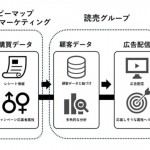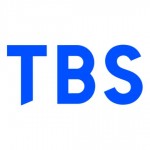RTBを使用したオークションは、市場の効率性を高める
During a recently held IAB Singapore conference Real Time Bidding was the hot topic of discussion. Carl Costa, GM and MD of StrikeAd APAC, a mobile DSP and RTB provider, shares his viewpoint with DMA on why RTB is gaining in popularity, and how fusing real-time bidding technology and expertise, DSPs can streamline ad buying and ensure that the demand-side gets the best deal possible.
What are the current trends driving marketers to look at mobile RTB?
There have been three key innovations in the mobile DSP and RTB space, and we’re a part of each. First there’s the emergence of DSPs to represent buyers’ interests. Second would be the buying of mobile ads with real-time bidding. And the third innovation would be the creation of a mobile cookie that you can use to track users that appear in the supply side platforms (SSPs) that we purchase from. As a buyer, you can now identify a user who used a certain site or an app, and made — or nearly made — a purchase, or showed some prior interest in your brand. We really want that user. We’re going to pay more for that user. That’s really something that was absent from the mobile DSP space until StrikeAd developed its mobile cookie. In essence these three things meet the demands of the mobile ad buyer – be able to reach an audience at scale in the most cost effective manner possible but with the added benefits of performance and optimisation in real time.
What kind of companies will benefit most from RTB when planning their mobile media strategy?
The biggest beneficiaries of DSPs and RTB are threefold – the advertiser, the ad agency, and the trading desk — each wants to buy exactly their desired audience with the minimum wastage, and at the best price. These target clients don’t really want anything else but that. The DSPs are on their side helping them do that. Then, on the sellers’ side, you have the ad exchanges, which are trying to do something similar but working with the publisher, trying to find as many buyers as possible, to make the inventory as attractive as possible, and get the price up. So we’re heading toward a much more efficient market where things are very clear. On one side there’s the buyer, and the DSP — and on the other the seller and the SSP (supply-side platform). Auctions using RTB also make the market more efficient. The auctions are a new piece where real-time bidding comes in, which is a process where we take each unique ad impression available in the exchange, we decide if we want it, and very quickly make a bid on it. Most importantly, we track if the user interacted with the ad, and learn whether to buy more of that media or those users. Over the course of the campaign we’re always optimising and reducing wastage.
Which markets in the APAC region is expected to see greater acceptance of mobile RTB?
Currently we are seeing a lot of activity from our big agency clients and trading desks, from our APAC HQ in Singapore. Our clients are buying across the region as StrikeAd gives them access to global inventory that is available on a country by country basis. As we see the growth of inventory and also of smartphone adoption, we will see the growth of mobile media buying via DSPs using RTB. Indonesia as an example has the highest smartphone adoption in the world currently and Japan has a number of mobile DSPs in market. StrikeAd saw this opportunity early on and has opened an office in Tokyo.
What makes RTB such an attractive proposition in the mobile advertising?
We have a real-time bidding engine within our mobile DSP offering that connects our clients to billions of individual ad impressions a month. So, let’s say you walk down the street and you’re about to go to the page of an app or a mobile site. The app or site is represented by a supply-side platform and the SSP pings us — this person is at this location, on this site, on his phone, about to see an ad. Do you want this ad? That represents a technological challenge, so we have to do a few things. One, we have to receive all those pings and you need high-load servers to deal with that sort of volume. Two, you need to then process all those billions of little bits of data in real time. Three, you need to run it through a database. Then finally you need to have an algorithm that says — yes we want that person, and this is what we’re prepared to pay – and send it all the way back to the exchange. Essentially we have some very clever tech, with some clever people defining and developing this tech. This means that for anyone looking to buy audience at scale in mobile we can deliver, each and every time.
How can a brand go for mobile RTB?
We make using RTB in mobile very simple for our clients. We provide a managed service or a self serve licence of our product to agencies and trading desks. We have spent over two and half years developing our tech and equipping our people with the skills to help our clients deliver success for their brand clients in mobile. Put simply an agency can use the StrikeAd mobile DSP the same way they would ad network, the difference being we have very smart tech and even smarter people who make buying in mobile simpler, fully optimised and with greater performance.
What is the current market size for mobile RTB in overall ad-spend in the region? What is the expected share and growth rate of RTB here?
Mobile RTB spend in the region is still in single digit figures but this is set to grow. We are working with a number of global trading desks and agencies where they are spending more of their budgets via mobile DSPs using RTB. The global mobile ad spend forecast to 2015 is $20.5billion and a double digit percentage of this will be via mobile DSP such as StrikeAd as more clients demand greater efficiencies and increased performance from their agencies and its spend on mobile advertising.











